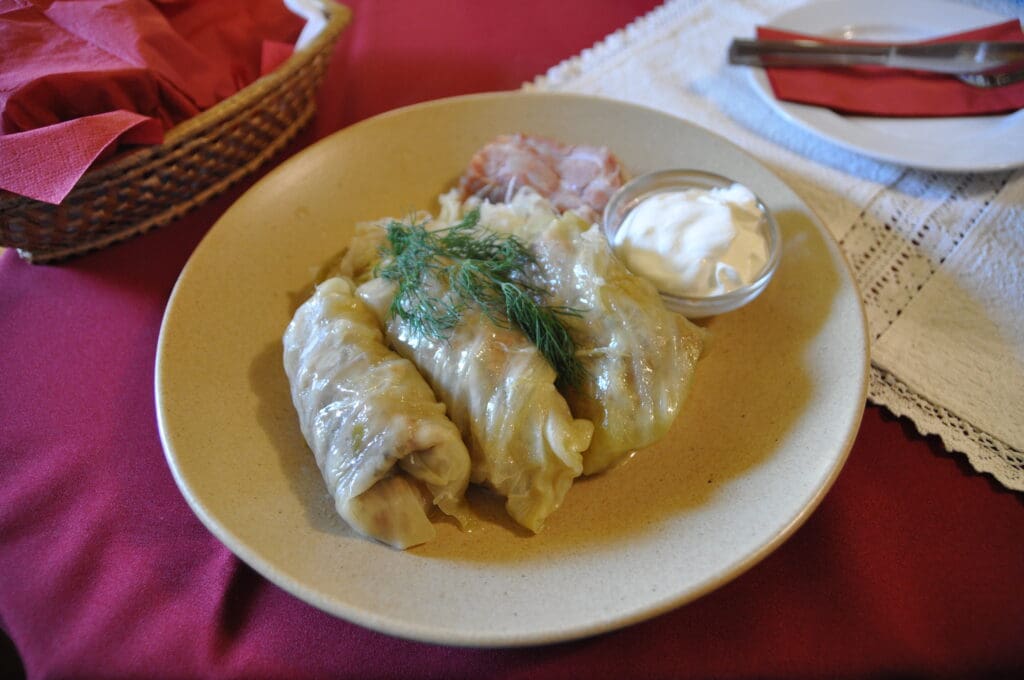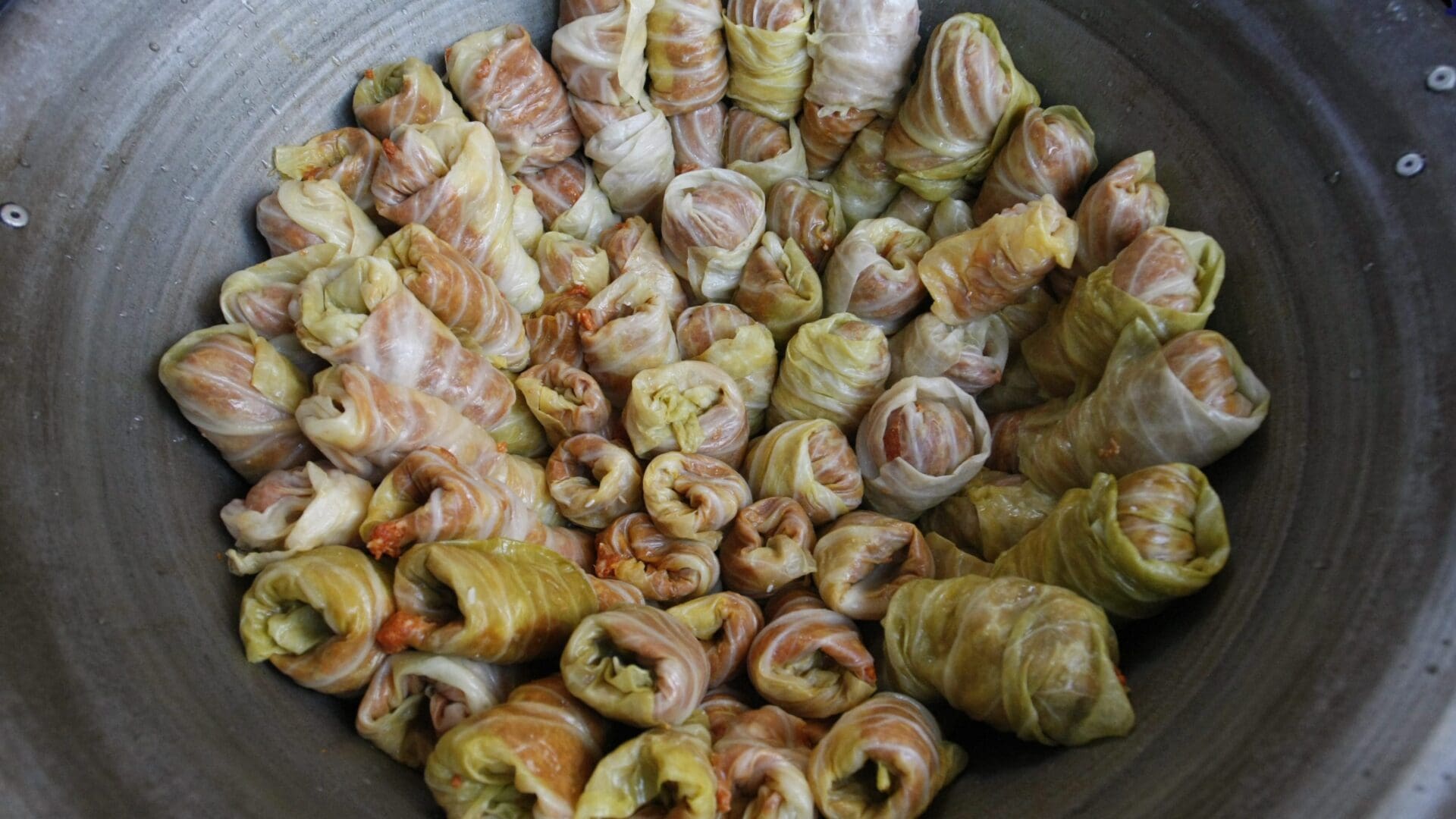Hungarian cuisine is, without a doubt, is a divisive one. Some find it too fatty or spicy, and are astonished by the generous portions served or the use of poppy seeds in desserts. Other love it, especially those who are more familiar with it, and have ventured beyond goulash and paprikash.
What is certain is that Hungary’s typical Christmas dishes are hard to dislike. We have already introduced our readers to the heavenly bejgli (beigli) and the fisherman’s soup, as well as the Hungarian Christmas candy, szaloncukor. But there is one dish that stands out among the festive courses—stuffed cabbage rolls, or ‘töltött káposzta’ in Hungarian.

Albeit variations of the dish are known in the Sweden, Russia and Turky as well, the recipe definitely goes back centuries so it can be considered as genuinely Hungarian. In fact, a very similar meal can be found described in the oldest surviving Hungarian cookbook, the 17th century Szakácsmesterségnek könyvecskéje (Booklet of the Cooking Trade). At the time, the dish was so popular that some even referred to it as ‘the coat of arms of Hungary’, the food most commonly associated with and consumed in the country. Nowadays, this food plays the role as one of the most integral part of Hungarian Christmas cuisine, although it is normal to eat it for other occasions during the rest of the year too. In any case, picturing Christmas without the presence of töltött káposzta on the table is hardly conceivable. One of the reasons stuffed cabbage is an integral part of the Christmas menu is because it was believed that consuming it during the holiday season will bring luck and fortune to the family. Old recipes also recommend drinking some alcohol once the töltött káposzta is consumed to help with the digestion of the hearty meal.
To prepare the cabbage rolls, you may use sauerkraut to fold the filling into, but you can also you freshly boiled cabbage leaves. The filling consists of minced beef and/or pork, eggs, rice, salt and pepper for the filling. Although cabbage rolls were made in Hungary even before paprika arrived in the country, once paprika became an everyday commodity, the minced meat of the cabbage rolls began to be seasoned with it, too. The rolls should be arranged at the bottom of a sizable pot and covered with liquid consisting of bone broth and put on a slow flame. Stuffed cabbage is recommended to be served with a spoonful of sour cream on the side.
Hungarian Stuffed Cabbage Rolls (Töltött káposzta)
No Description
It is crucial to be cautious with the amount of salt we add to the dish if we use sauerkraut, as it may already be quite salty.
It may seem that the preparation of töltött káposzta paprika is complicated and time-consuming. Well, it may be so, but the end product if worth all the trouble!
We hope that our suggestions this winter have inspired you to try your culinary skills and enhance your Christmas menu with some Hungarian gastronomic delights. Enjoy!








